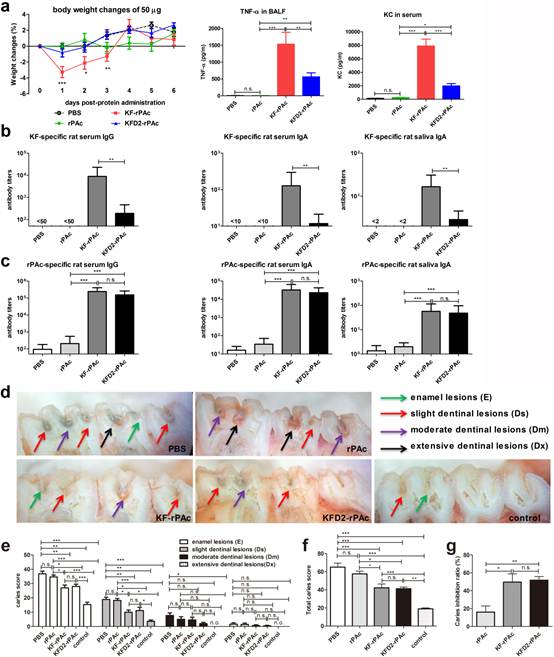It affects 60–90% of school-age children and the vast majority of adults, thus an anti-caries vaccine has long been attractive for broad-based dental health in caries prevention, and in the treatment of large infected populations. Dental lesions of caries usually result from the localized dissolution and destruction of teeth caused primarily by Streptococcus mutans (S. mutans) infections.
In a present study, the research group led by Prof. YAN Huimin from Wuhan Institute of Virology of the Chinese Academy of Sciences characterized the second-generation flagellin-rPAc fusion protein, a vaccine candidate designed to avoid an undesired flagellin-specific antibody response and inflammatory side effects while inducing efficacious antibodies against PAc and providing high protective efficacy against dental caries.
To reduce the immunogenicity of flagellin, the scientists constructed a second-generation flagellin-rPAc fusion protein, KFD2-rPAc, in which rPAc replaced D2/D3, the main antigenicity domains of KF.
Results in this study demonstrated that the immunogenicity of flagellin itself is substantially reduced in KFD2-rPAc. KFD2-rPAc induced over 10-fold less flagellin-specific antibody responses in mice and rats. The significantly lowered immunogenicity of flagellin partly makes KFD2-rPAc more feasible for multiple administrations without interference by pre-existed antibodies.
In conclusion, KFD2-rPAc, the second-generation flagellin-rPAc fusion protein, induced low potential systemic inflammatory responses and low flagellin-specific antibody responses, but high immune protection against caries. These advantages make KFD2-rPAc a promising anti-caries vaccine candidate.
The results have been published in Scientific Reports entitled " Second-generation Flagellin-rPAc Fusion Protein, KFD2-rPAc, Shows High Protective Efficacy against Dental Caries with Low Potential Side Effects".
This work was supported by grants from the National Natural Science Foundation of China, the "One-Three-Five" Strategic Planning Program of Wuhan Institute of Virology of the Chinese Academy of Sciences, and grants from Deutsche Forschungsgemeinschaft.

KFD2-rPAc induced a much lower systemic inflammatory response. (Image by ZHONG Maohua)
(Editor: ZHANG Nannan)
http://english.cas.cn/newsroom/research_news/201709/t20170914_183123.shtml


